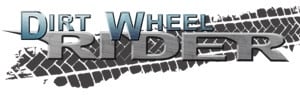Table of Contents
You hop on an ATV for a quick trail ride or shoot out on the dunes to tackle some epic jumps and when you get back, turn off the ATV, and hop off you can barely hear anything! Have you ever screamed at yourself (since you can’t hear) “Why in the heck are these ATVs so loud?” Well I am going to help clear things up for you and give you all the reasons why ATVs are so loud.
ATVs are so loud because their engines rev at very high RPMs, they have shortened exhaust systems, have poorly insulated or non existent engine compartments, and are generally ridden very fast wherever they go.
Let’s take a look at several reasons why ATVs are just so darn loud. Sport ATVs are almost always louder than their utility focused counterparts so we will take the time to discuss the differences between 2 stroke and 4 stroke ATV sound levels.
In order to achieve the high performance standards that ATVs need to have, things like noise do not rank very high on the list for most ATV manufacturers. If you want to make your ATV quieter there are several methods that should work for your specific application.
The loud noise on your ATV can come from many sources and end up making one very loud high performance machine. Trust me, when an ATV comes screaming by you, you will know what I mean. Let’s explore the many different areas sound comes from.
The Combustion Engine
ATV engines have a lot of moving parts to them. They are also combustion engines and we all know that combustion means EXPLOSION!
First off, let’s talk about what types of combustion engines ATVs use. There are 4 stroke engines that all modern ATVs have and come standard. 2 stroke engines have not been manufactured since 2006 and Yamaha was the last company to roll their famous Banshee 2 stroke off the assembly line. ATV engines now are a lot like your modern car engines.
A 4 stroke engine means that 4 piston strokes are needed to complete a cycle. This cycle includes four distinct processes. Let’s explore these a bit more to get a better understanding of what is really going on inside our engines.
Intake
When you turn on the key and hit the start button, it sends a signal to the engine engaging the starter. The piston then moves down into the cylinder and the intake valve opens pulling in air and fuel.
Compression
Once the piston has reached the bottom of the cylinder and is full of fuel and air it shoots back up the cylinder, compressing the fuel air mixture.
Combustion and Power Stroke
The spark plugs then ignite the fuel air mixture causing the explosion. This explosion causes the gasses to expand at a rapid rate and pushes the piston downward during the power stroke. Each cycle turns the crankshaft which provides power to rotate the gears driving your ATV.
Exhaust
Finally, the piston moves back up the cylinder and the exhaust valve opens. This expels all the burnt gasses through your exhaust pipe.
It’s not really all that confusing when you break it down into steps ut it is easy to see how this can affect the sound levels coming from your ATV. There are tons of miniature explosions going off and several moving parts making tons of noise
No Engine Insulation
ATVs are known for having an open design when it comes down to covering up engine components. This means there is nothing surrounding the engine to dampen all the noises. Cars have compartments built especially to house their engines with sound proofing materials and specially designed mufflers to keep the exhaust from being too loud. (OK well most cars anyway)
Muffler
A muffler is basically a set of tubes held inside an enclosure and has several chambers. These tubes are precisely tuned so that sound can reflect off the surfaces and the sound waves can essentially cancel each other out.
Exhaust gases and sound waves enter from the engine through the center tube. They bounce off the back wall and are reflected through a hole into the main body of the muffler. They then pass through more chambers and finally exit the muffler through the back at drastically reduced levels.
I bought my Polaris 525s with a few mods already completed. The guy who sold it to me did some carburetor work and installed a full exhaust system and was having trouble getting it to run right. I took it over to a friend’s house and we tuned it a bit and figured out we needed a bit more back pressure in order to really tune in the quad. I ordered an exhaust baffle to increase back pressure and my problem was solved.
What I didn’t realize at the time was that baffles also make the exhaust quieter! A baffle on an exhaust essentially just slows down the leftover gasses creating back pressure and as a result, lessens the sound escaping from the muffler.
Note: Putting a baffle on an exhaust is not always the best solution because adding unnecessary back pressure can cause your ATV to run horribly. My situation was different because the previous owner did some modifications and the backpressure was needed.
Component Wear
When you don’t properly maintain your ATV or you have general wear and tear, it can cause your components to get louder.
If your exhaust gaskets are old and dried out or you have a crack in your exhaust system it can cause the gasses to escape before getting to the muffler and create additional noise. Along with these external noises, if your engine wears out or has not been properly serviced, the components can wear out and start to make noise inside the engine.
Will I Get Hearing Loss?
With all this talk about sound you may wonder, “What about my hearing?!”
Noise above 85 decibels over a prolonged period of time may start to damage your hearing if you do not wear proper hearing protection. Noise above 120 decibels can cause immediate damage to your ears and should be avoided if at all possible unless wear protection. These cheap ear plugs are a minimal design and will help protect you from hearing loss.
What decibel levels do ATVs operate at?
In 2002 California passed a measure limited sound output of off road vehicles used on public lands in to 96 decibels that many states are also following. That is reasonable but is well above the threshold of 85 decibels and can damage your hearing, especially since most people go on prolonged rides. Then you have aftermarket exhausts which can exceed 100 decibels easily so make sure you use proper ear protection! Foam earplugs are enough to protect your hearing.

2 Strokes
With a two-stroke ATV the combustion happens each time the piston pulls back. This causes the ATV to produce much more noise than a 4 stroke ATV. The way these two ATVs work is noticably different, resulting in two different sounds.
That just about covers everything you need to know as far as why ATVs are so loud. Just remember everything in this article the next time you are riding an ATV or one comes flying by you. You should be able to tell why they are so loud, and even come up with a few ideas on how to make them just a bit quieter.
